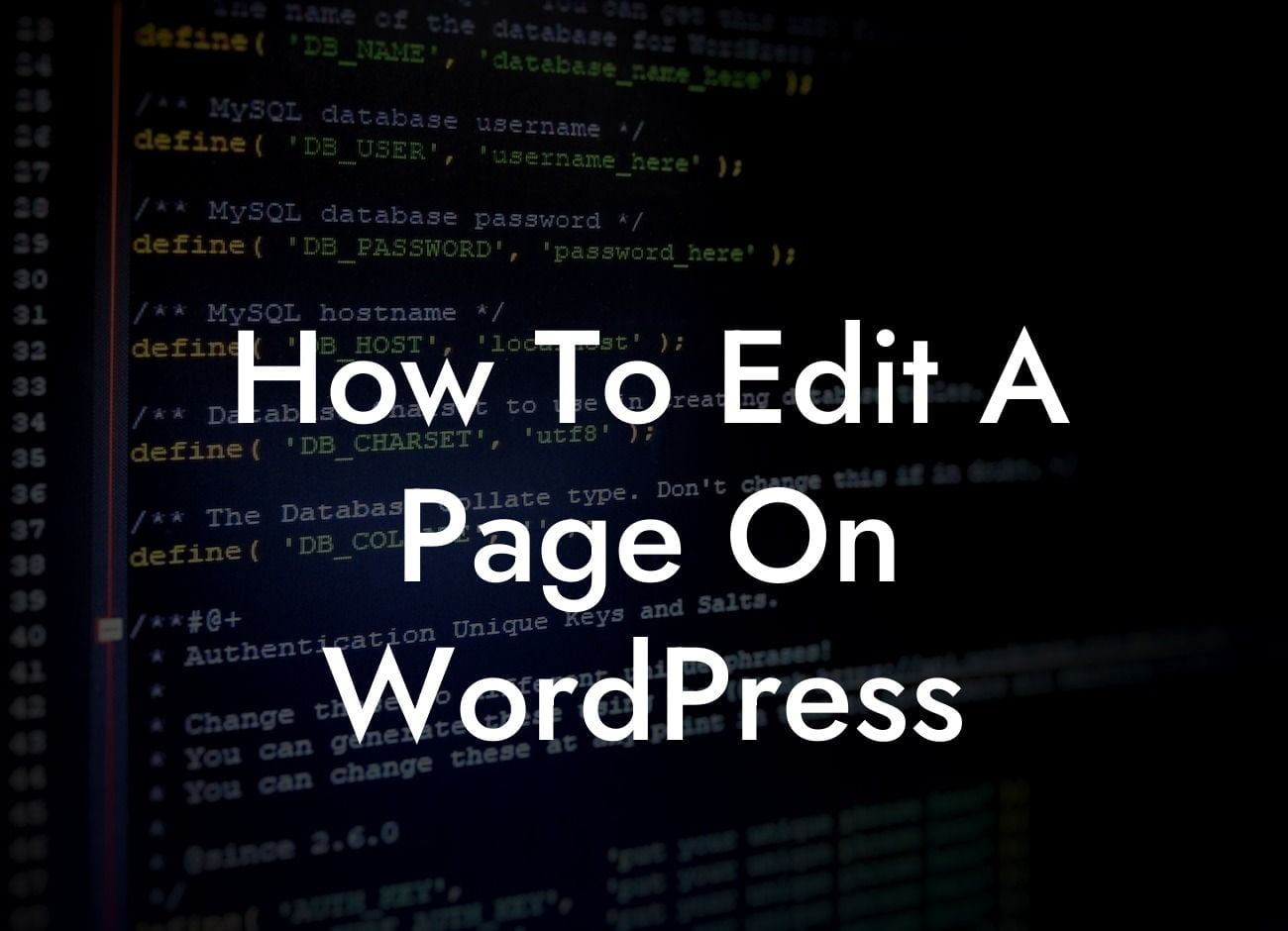Editing a page on WordPress may seem like a daunting task at first, especially if you're not familiar with the platform. But fret not, because in this guide, we'll walk you through the step-by-step process of editing a page on WordPress. Whether you're a small business owner or an entrepreneur looking to enhance your online presence, our detailed instructions and tips will help you navigate through the editing process seamlessly.
WordPress provides a user-friendly interface that allows you to easily edit and customize your website's pages. Let's dive into the detailed steps involved in editing a page on WordPress:
1. Log in to Your WordPress Account:
To edit a page, you'll need to log in to your WordPress account. Once you're logged in, you'll be directed to your website's dashboard, where you'll find all the editing options.
2. Access the Page Editor:
Looking For a Custom QuickBook Integration?
Choose the page you want to edit from the list of pages displayed in the dashboard. Click on "Edit" or "Pages" to access the page editor.
3. Familiarize Yourself with the Page Editor Interface:
The page editor interface consists of two main sections: the visual editor and the page settings. The visual editor allows you to make changes to your page's content, while the page settings offer additional customization options.
4. Make Content Changes:
Using the visual editor, you can easily edit the existing content on your page. Add or remove text, images, videos, and other media elements to enhance the page's appeal. Use suitable H2 and H3 headings to structure your content and make it more readable. Incorporate bullet point lists and ordered lists to organize information effectively.
5. Utilize Formatting Options:
WordPress offers various formatting options to make your content stand out. Experiment with different font styles, sizes, and colors to make your page visually appealing. Use bold and italic formatting to highlight important information.
6. Customize Page Settings:
In the page settings section, you can modify the page's permalink, add a featured image, and adjust the page attributes. Permalinks are the URLs of your pages, so make sure they are SEO-friendly and reflect the content accurately.
How To Edit A Page On Wordpress Example:
Imagine you own a small business that offers handmade jewelry. To attract more customers, you decide to edit your homepage on WordPress. You revise the product descriptions, add high-quality images of your jewelry, and create a bullet point list showcasing the unique features of your products. These changes not only make your homepage visually appealing but also provide valuable information to potential customers.
Now that you have learned how to edit a page on WordPress, it's time to unleash your creativity and make your website truly extraordinary. Explore other guides on DamnWoo to gain more insights into WordPress and don't forget to try out our awesome plugins to supercharge your online success. Share this article with others who might find it helpful and let them experience the power of DamnWoo!
In conclusion, editing a page on WordPress doesn't have to be overwhelming. With our detailed guide and user-friendly interface, you can effortlessly customize your website's pages and take your online presence to new heights. Stay tuned for more exciting content from DamnWoo!













